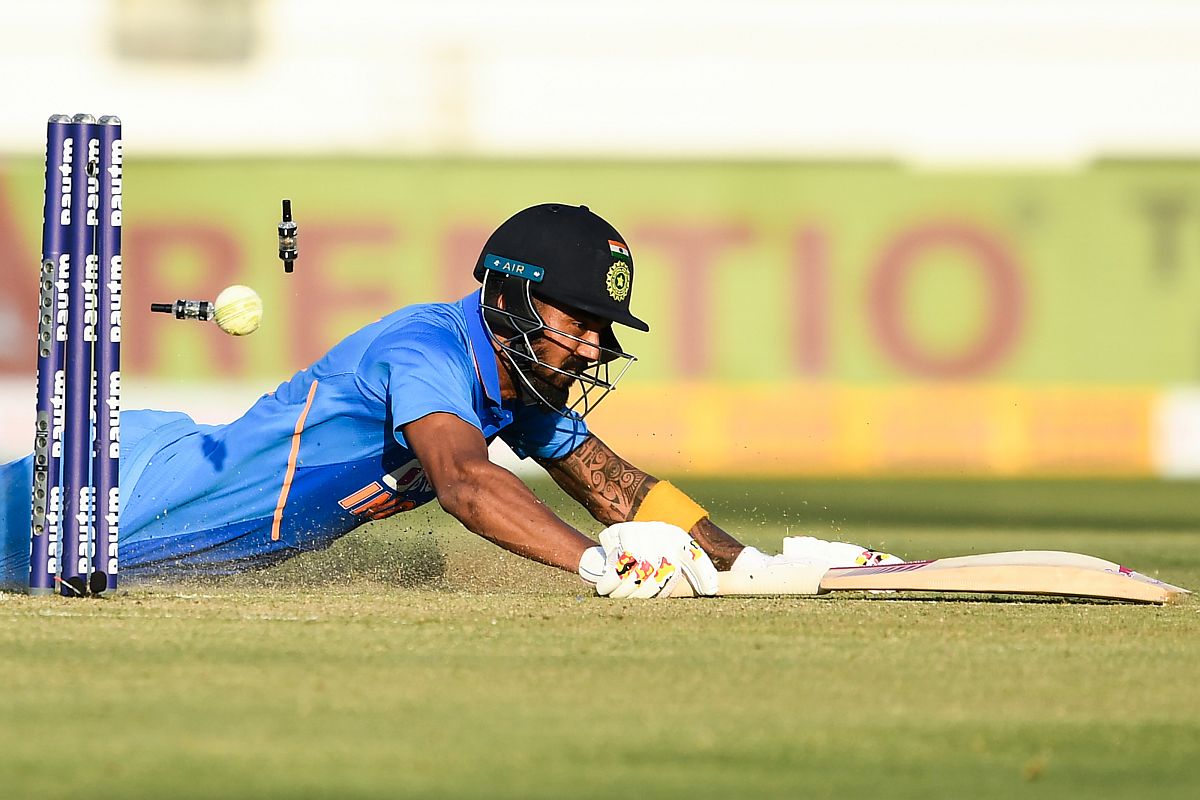After steering India to a series-equalling win against Australia with his 52-ball 80 and a standalone performance behind the sticks at the Saurashtra Cricket Association Stadium in Rajkot on Friday, KL Rahul said that he had prepared to bat in the middle-order by watching videos of AB de Villiers, Steve Smith, and Kane Williamson.
“I don’t think technically I have practised anything different. I just spoke a lot more to middle-order batsmen and watched a lot of videos. I spoke a lot to Virat (Kohli) and watched a lot of videos of Ab (De Villiers) and Steve Smith for that matter and how they build their innings,” PTI quoted Rahul as saying during the press conference where he also credited Williamson’s videos.
However, given the way the 27-year-old has evolved as a cricketer, it is his sheer modesty that he is not paying heed to his greatness despite achieving more hard-earned numbers than his contemporaries in recent times.
In the last one-two years or so, every time a dark cloud loomed over the Indian dressing room, the axe has always fallen on KL Rahul. Going into the last year’s World Cup, Virat Kohli’s side was the subject of a prolonged fuss as to who their number four batsman would be. Rahul, who is generally an opener, was asked to guard the position.
After a score of 26 in India’s opener against South Africa, he was further demoted to sixth in the next match against Australia where he scored an unbeaten 11 off three balls.
In the middle of the tournament when regular opener Shikhar Dhawan was injured, Rahul was promoted and asked to fill the void beside Rohit Sharma. His scores at the top were 57, 30, 48, 0, 77, 111, and 1.
But with the comeback of Dhawan after the World Cup, his position was again put under the knife. This time, instead of a demotion, Rahul was dropped from the playing eleven altogether. Dhawan and Rohit opened in the first two T20Is of the three-match series which India won on the West Indies tour and the team management gave Rahul a consoling chance in the third match where he scored 20 off 18.
After sitting out against South Africa in the T20 series at home, Rahul came back in the team as captain Kohli skipped the T20I series against Bangladesh. With Rohit Sharma and Dhawan in full flow, Rahul was asked to bat at number three. He failed to grab much success!
Rahul went back to his Karnataka colours and amassed 598 runs at an average of 66.5 with the highest score of 131 in the Vijay Hazare Trophy. In the T20 competition of Syed Mushtaq Ali Trophy, the right-hander amassed 313 runs while scoring more than 50 in every match.
Another injury for Dhawan meant Rahul got his favourite position back in the next limited-overs series against the West Indies. His T20I scores were 62, 11 and 91, while the ODI numbers stood staggering at 6, 102 and 77. He followed them with 45 and 54 in India’s next T20 series against Sri Lanka, planting a sweet-yet-unwanted headache in the minds of the Indian thinktank.
In the last calendar year of 2019, Dhawan and Sharma, who had batted only at the top, possessed ODI average of 57.31 and 36.44 respectively, while KL Rahul, despite batting at five different positions, averaged 47.67. In T20s, where Rahul has mostly opened in 2019, his number is much better than India’s first-choice top two. With 49.50, he beats Rohit’s 28.29 and Dhawan’s 22.67. Yet these consistencies have failed to cement his spot as one of the limited-overs openers.
And despite all the disconcertment in his batting order, the 27-year-old has excelled brilliantly every time. Batting only for the second time at five, Rahul’s fiery knock and equally-brilliant performance with the wicketkeeping gloves, where he took two catches and effected one lightning-fast stumping, against Australia on Friday, could well be argued as the factor that separated the two teams.
What was put into display at Rajkot was the finest product of the experiment that he had subjected himself to, that is to make an impact with all his might in the minimum duration possible in the limited opportunities he would get. He was never meant to be the first-choice wicketkeeper but has polished himself as one, much like what Rahul Dravid did at the turn of the century.
This generation, that has witnessed the old-school-like dominance of Virat Kohli, Sehwag-esque power hitting of Rohit Sharma and the best-ever Indian pace attack, is yet to fully recognise the selflessness of another Karnataka cricketer.











